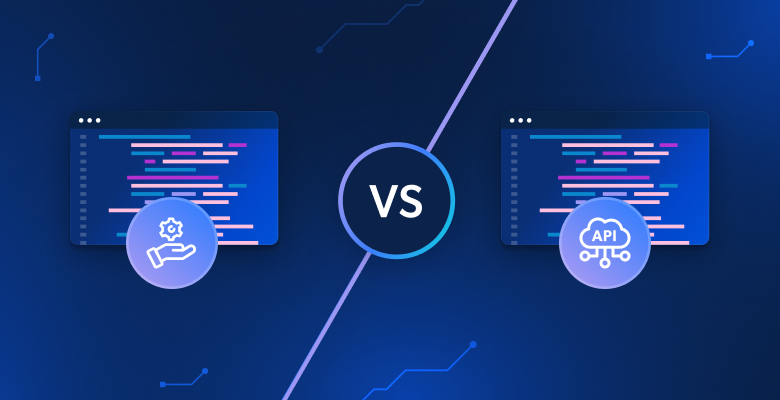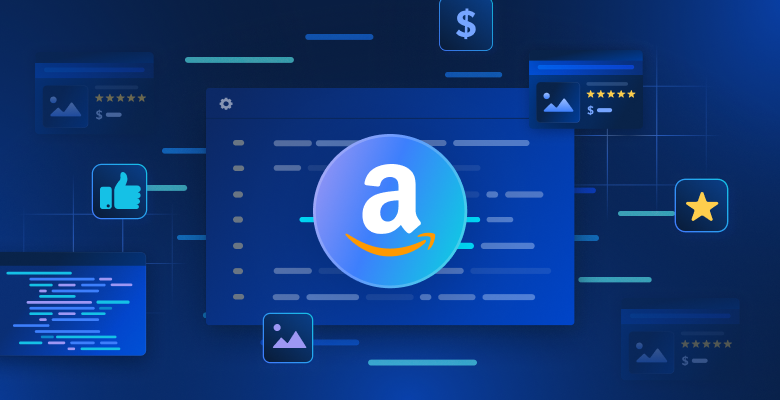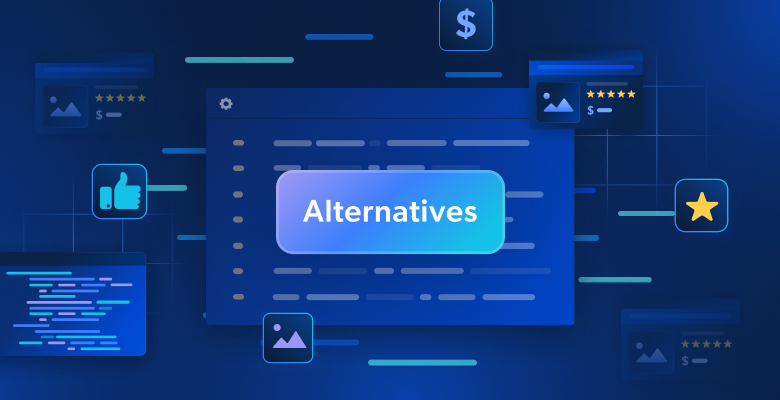In this blog post, you will learn:
- How we evolved from standard RAG to Agentic RAG.
- What Agentic RAG actually is.
- How it works and the most common architectures to implement it.
- A comparison between traditional RAG and Agentic RAG.
- Its main use cases.
- The key challenges it introduces, and how to handle them like a pro.
Let’s dive in!
From RAG to Agentic RAG
RAG (Retrieval-Augmented Generation) is a technique that enhances LLM applications by providing them with relevant external context. It works by retrieving documents via data sourcing at query time and feeding them to the LLM.
This helps anchor the model’s responses in accurate information, reducing the risk of hallucinations. However, traditional RAG applications have two major limitations:
- They typically rely on only one—or a limited number of—external knowledge sources.
- They follow a one-shot approach: context is retrieved once, with no iterative reasoning or validation of the retrieved information.
Meanwhile, the AI landscape is rapidly evolving with the rise of AI agents. These are LLM-based systems capable of reasoning, planning, remembering, and using external tools (e.g., via MCP). Those agents can perform complex, multi-step tasks, adapt to new inputs, and make decisions based on observations.
This shift demands a more advanced approach: Agentic RAG. Time to explore this new era of retrieval-augmented generation!
What Is Agentic RAG?
Agentic RAG is a RAG architecture powered by AI agents. At its core, it transforms the static retrieval-generation pipeline into a dynamic, agent-driven process.
Unlike traditional RAG, it does not rely on a fixed sequence of retrieval and generation steps. Instead, agentic RAG hands control to an autonomous agent capable of reasoning, planning, and tool use.
In this setup, the RAG agent is responsible for deciding how to retrieve information, which tools to use, and when to refine its understanding of a user’s query. It can interact with several data sources, validate results, iterate over steps, and even collaborate with other agents when needed.
That architecture opens the door to more flexible, adaptive, and intelligent agent-based AI systems. Agentic RAG is designed to handle complex, multi-step tasks with greater contextual awareness and autonomy.
How Does Agentic RAG Works
Agentic RAG works by embedding AI agents into the retrieval stage of a RAG pipeline. Instead of passively pulling documents from a single source, the idea is to rely on retrieval agents that actively choose how and where to fetch information.
These agents can access a wide range of tools, including vector databases, web search engines, external APIs, calculators, and more. For example, they could connect to an MCP server that exposes over 20 tools for real-time data extraction from any webpage.
The RAG agent is in charge of everything. It can determine whether retrieval is needed, which tool to use, how to phrase the query, and whether the retrieved context is good enough—or if it needs to try again.
In more complex cases, multiple specialized RAG agents may collaborate. One agent might query a structured database, while another scrapes data from emails or web pages.
While the concept is still new, top AI agent libraries already offer everything needed to implement agentic RAG workflows. Next, let’s explore two popular architectures to better understand how this mechanism works!
Single-Agent RAG
The simplest form of agentic RAG is implemented using a single-agent system that functions as a router. This agent is often called an Agentic RAG Router or a RAG Routing Agent.
In this architecture, a single AI agent receives the user query and decides which external knowledge source or tool to use for retrieval. The router agent can connect to one or more sources, with no strict limitations—ranging from vector databases to scraping APIs.
The RAG agent routes the query to the most relevant source, retrieves the necessary information, and passes the retrieved context to the LLM. In other words, it combines the retrieved data with the user query to help the LLM generate a final, accurate response.
This design is simple and effective, making it well-suited for use cases with a limited number of tools or data sources.
Multi-Agent RAG Systems
For more complex tasks, a multi-agent architecture should be preferred. In this case, a master agent coordinates multiple specialized retrieval agents.
Each of those agents is responsible for a specific data domain or task within the overall agentic RAG process. For example, one agent might retrieve internal proprietary documents, another might gather information from the web, while others may aggregate or validate the data.
This division of labor allows the system to handle multi-faceted queries more efficiently. That is because agents can work in parallel to collect and process information from different sources.
Multi-agent RAG systems typically include a variety of specialized agents, such as:
- Routing agents: Decide which data sources and tools to use based on the user’s query and direct the flow through the most relevant RAG pipeline.
- Query planning agents: Break down complex queries into sub-tasks, distribute them among agents, and consolidate the results into a coherent response.
- ReAct agents: Use reasoning and action steps to solve tasks iteratively according to the ReAct paradigm. They can select tools and refine actions dynamically based on intermediate outcomes.
- Plan-and-execute agents: Execute entire multi-step workflows independently, improving efficiency and reducing the need to loop back to a central planner.
This modular and collaborative architecture makes multi-agent RAG highly adaptable and powerful. This way, it becomes ideal for sophisticated, real-world AI applications.
RAG vs Agentic RAG
RAG works in narrow contexts but is limited by its one-shot retrieval, lack of adaptability, and inability to validate or refine its outputs.
On the other hand, agentic RAG integrates AI agents into the pipeline to create a smarter, more flexible system. This better mirrors how humans think and operate when solving complex tasks using information from trusted channels.
For a quick comparison, see the RAG vs agentic RAG summary table below:
| Aspect | Traditional RAG | Agentic RAG |
|---|---|---|
| Access to external tools | ❌ | ✅ |
| Collaboration between agents | ❌ | ✅ |
| Query pre-processing | ❌ | ✅ |
| Multi-step info retrieval | ❌ | ✅ |
| Validation of retrieved info | ❌ | ✅ |
| Adaptability to changing context | ❌ | ✅ |
| Scalability | Limited | High |
Note: Even the most powerful RAG system—whether traditional or agentic—cannot completely eliminate the risk of AI hallucinations.
Is Agentic RAG Always Better Than Standard RAG?
TL;DR: No, not necessarily. There are still scenarios where traditional RAG is the better choice.
Given all the advantages we have discussed, you might wonder if there is still a reason to use plain, traditional RAG pipelines. The answer is yes.
While agentic RAG brings all the benefits highlighted before, it also comes with trade-offs. More agents mean higher complexity, greater costs, and a larger surface for errors or failure. Agentic systems can also be harder to debug and slower due to coordination overhead. It can also be difficult to understand what happened behind the scenes and how you got a specific response.
Traditional RAG remains ideal for simpler, well-defined use cases where speed and cost-efficiency matter most. Instead, agentic RAG shines in other scenarios. Discover them!
Agentic RAG Use Cases
Agentic RAG excels in scenarios demanding dynamic interaction with diverse information sources, such as:
- Enterprise search across data silos: Let agents retrieve and consolidate information from emails, databases, internal documents, and APIs—all in one comprehensive response.
- Automated customer support: Handle routine inquiries autonomously, while intelligently escalating complex issues to human agents when required.
- Complex research and analysis: Synthesize information from disparate knowledge bases and sources to answer intricate research questions or perform in-depth analysis.
- Personalized content generation: Integrate user-specific information with broader knowledge to create highly customized content, such as personalized reports or learning materials.
- Multimodal data processing: Reason across text, images, and audio for compliance reviews, insurance claims, or more.
Challenges in Agentic RAG and How to Overcome Them
Among all the new challenges introduced by managing an architecture with one or more RAG agents, Agentic RAG still shares many of the core difficulties found in traditional RAG systems.
The reason is that most of the complexity stems from retrieving high-quality, trustable data—regardless of the architecture.
Yet, Agentic RAG goes a step further. It is not just about having access to reliable data across industries. It also requires tools, applications, and systems to retrieve, analyze, transform, and work with that data.
Thus, you need access to a complete AI infrastructure for data. That is exactly what Bright Data offers through its AI solutions, which includes:
- Data providers: Connect with trusted providers to source high-quality, AI-ready datasets at scale.
- Autonomous AI agents: Search, access, and interact with any website in real-time using a powerful set of APIs.
- Vertical AI apps: Build reliable, custom data pipelines to extract web data from industry-specific sources.
- Foundation models: Access compliant, web-scale datasets to power pre-training, evaluation, and fine-tuning.
- Multimodal AI: Tap into the world’s largest repository of images, videos, and audio—optimized for AI.
- Data packages: Get curated, ready-to-use, structured, enriched, and annotated datasets.
Conclusion
In an AI-driven world moving rapidly toward intelligent agents, agentic RAG represents the natural evolution of traditional RAG workflows. It improves standard RAG pipelines by introducing AI agents capable of reasoning over and validating the retrieved contextual data.
As covered here, the main challenges do not just come from having access to high-quality data. They also require having agent-ready tools for retrieval, validation, and transformation. That is specifically what Bright Data’s AI infrastructure is designed to provide.
Create a free Bright Data account and start experimenting with our AI-powered data infrastructure today!





